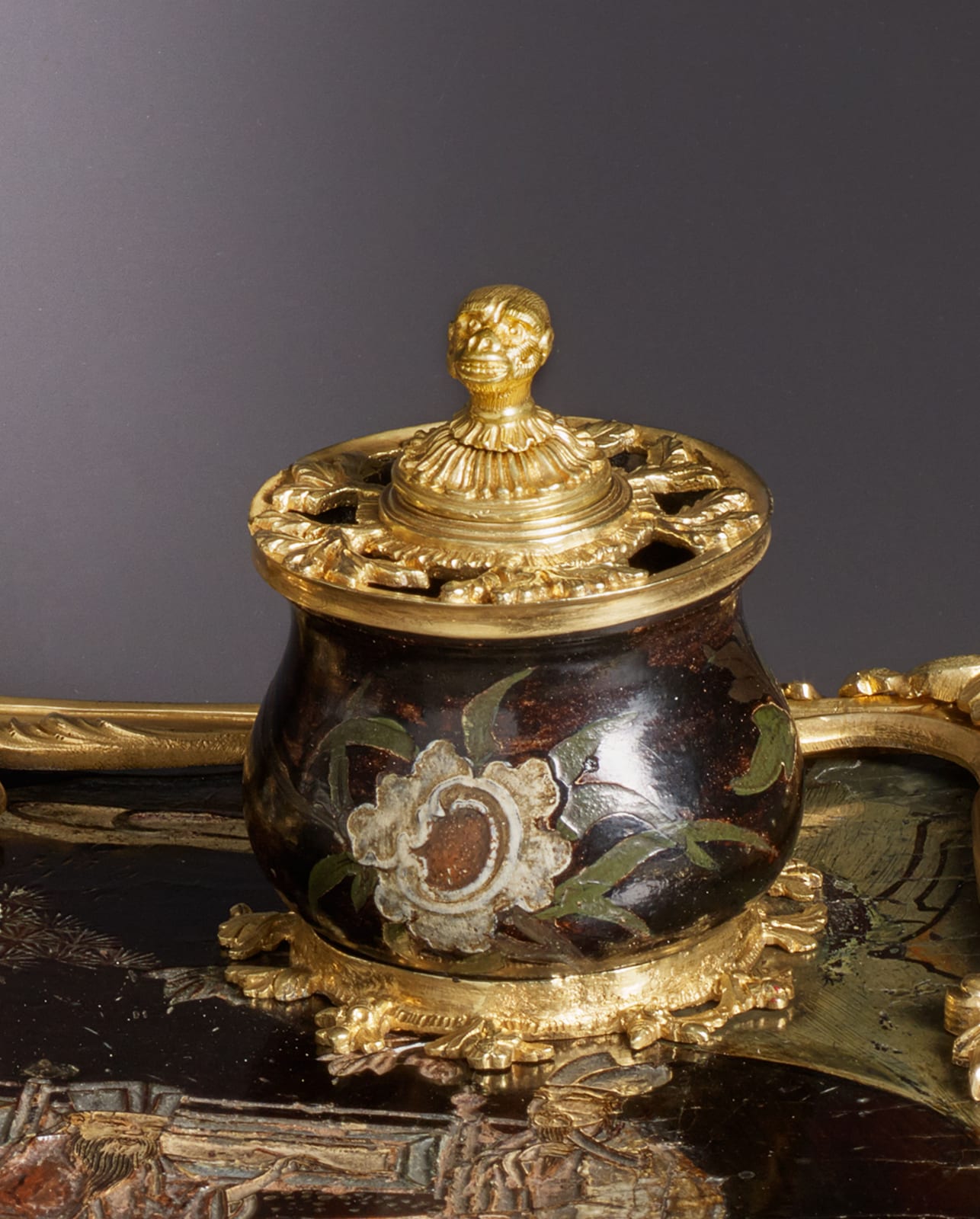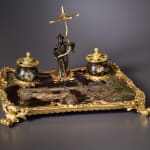Unknown
A very fine Louis XV gilt bronze mounted Chinese lacquer écritoire or inkstand of slightly asymmetrical rectangular form with a scrolled foliate border continuing down to conformingly scrolled foliate feet at each corner, inlaid with Chinese polychrome lacquer work featuring in the left hand foreground four bearded Chinese scribes each wearing a hat and long robes and seated on chairs around a long table, the central figure holding a brush ready to inscribe a parchment that is laid across the table, which is further adorned by a ribbon tied scroll to the right and a book to the left, behind the group, running across the length of the scene, is a balustrade or bridge and to the right hand foreground is abundant foliage and flower heads. With a matching baluster-shaped ink pot and sander placed in the upper corners, each mounted upon an asymmetrical gilt bronze foliate base and also with gilt bronze pierced and domed circular foliate lid surmounted by the head of a monkey, in between the inkpot and sander stands a lacquered Chinaman holding aloft a gilt bronze parasol with a serpentine-shaped handle and placed upon an asymmetrical scrolled gilt bronze base
Paris, date circa 1750
Height to include parasol 27 cm, width with feet (to follow) cm, depth 34.5 cm.
This charming Louis XV Chinoiserie inkstand with its Parisian gilt bronze mounts can be compared to a similar écritoire of circa 1750, which as here features red, black and gold lacquer work and has an almost identical central Chinaman holding the same gilt bronze parasol, which is now in the Musée du Louvre, Paris, having been gifted by Monsieur and Madame René Grog-Carven (illustrated in Madeleine Jarry, “Chinoiserie Chinese Influence on European Decorative Art 17th and 18th Centuries”, 1981, p. 214, pl. 232.). Both pieces are rare and typical of the objects sold by the marchand-mercier Lazare Duvaux to his wealthy clientele. During the eighteenth century, France and particularly Paris, experienced a growing fashion for gilt bronze mounted porcelain and lacquer work which was largely due to intervention of Duvaux, and to a lesser extent other dealers, who actively encouraged the vogue. He, like other marchands-mercier was responsible for their overall design, creation and then promotion and sale to the most affluent sectors of society, not least the royal court. After purchasing the lacquer work, probably from one of the East Indies companies, Duvaux or another marchand-mercier would then have commissioned one of the Parisian bronziers to create appropriate mounts and an artisan for the final assembly.
The vogue for Chinoiserie was very much in keeping with the Rococo style that prevailed during the early to mid eighteenth century, when asymmetry and rocaille or rockwork designs came to the fore.



